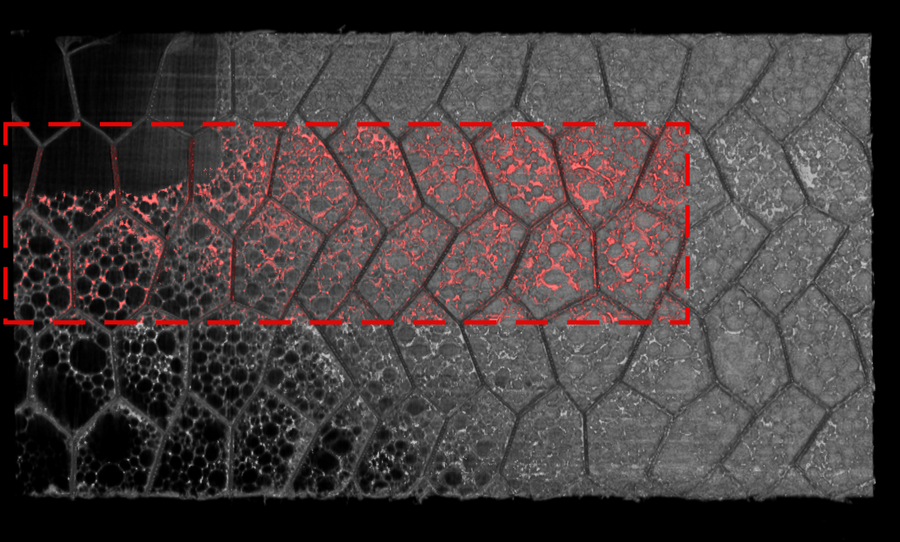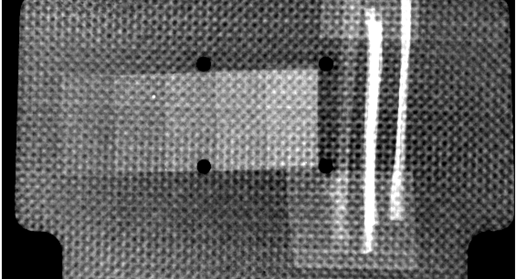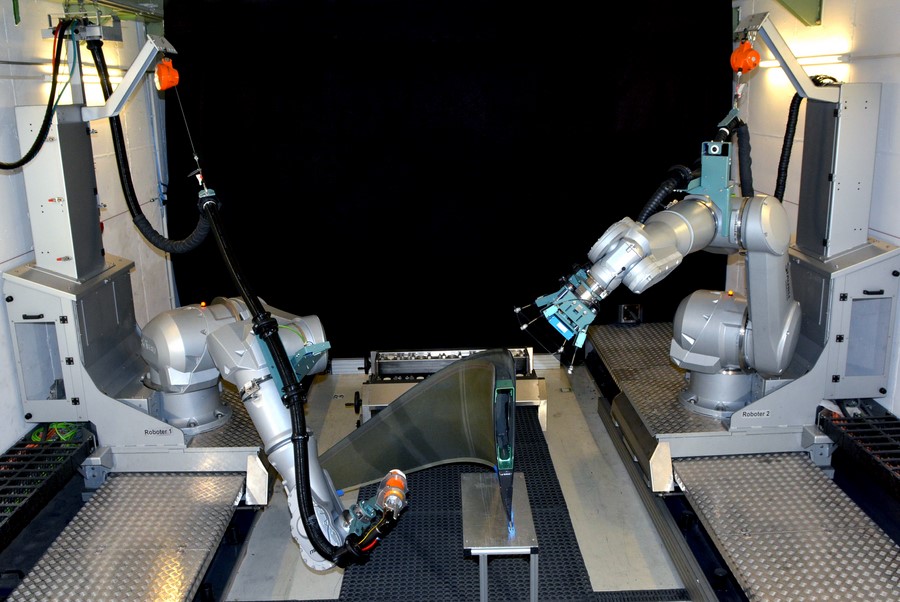Noiseless single photon counting devices were used for the visualization of low absorption components, enabling a broad dynamic range, and thus detailed nondestructive structural and material characterization. A series of advanced X-ray techniques were investigated, such as multi energy XCT, robot based XCT, fast XCT techniques, and novel data analysis methods.
In particular for small, high volume parts, the possibilities and limits of fast inspection concepts were worked out. XCT acquisition and reconstruction methods were adapted to the requirements of large and complex parts inspection, using robot-based XCT systems. The optimized techniques were investigated on the lab -size robot XCT system demonstrators at FHG and FACC.
Dual energy CT (DECT) scans were proved to be suitable for the identification of pores within hybrid specimens (composite metallic parts). Further experiments have been carried out for the decomposition of carbon and aluminum.




